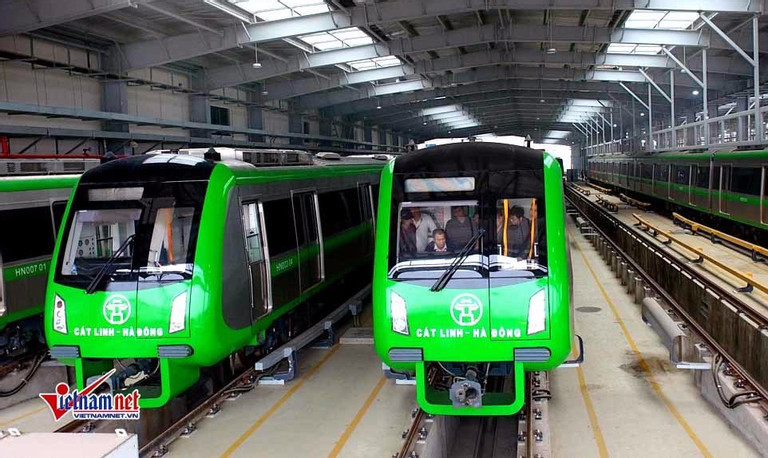
HCM City Mayor Phan Van Mai at a recent meeting said that under the transport network development plan approved 20 years ago, the city expected to build an urban railway system with total length of 220 kilometers. However, in the last 15-16 years, the city has only built the first subway line with a length of 19.7 kilometers.
With this slow implementation, it will need 50-70 more years to complete the network of 200 kilometers in length as initially planned. Mai said this is unacceptable.
The Politburo has recently released Decision No 49, requesting HCM City to complete the urban railway network of 200 kilometers by 2035.
Pham Dang Phong, Director of the National Research Institute of Mechanical Engineering (NARIME) under the Ministry of Industry and Trade (MOIT), said that with eight urban metro routes and two under construction (the 20 kilometer Ben Thanh - Suoi Tien and 11 kilometer Ben Thanh - Tham Luong), HCM City will need to build an additional 138 kilometers of urban railways with investment capital of $12.6 billion.
As for Hanoi, after putting the Cat Linh – Ha Dong metro into operation, the city will still need to build nine more routes, 404.8 kilometers in length, with capital of $37 billion.
The Vietnam railway network development plan (2021-2050) calls for high-speed North-South railway route, 1,700 kilometers, capitalized at $61 billion.
The figures show that there is a vast market for mechanical engineering companies. Experts said if there are reasonable policies to develop the railway industry, the localization ratio may reach 79-83 percent, or $111.27-116.9 billion into the pockets of Vietnamese companies.
This is a vast market for Vietnamese mechanical engineering companies. However, as Phong warned, if there is no reasonable policy to localize railway mechanical engineering, the market worth hundreds of billions of dollars will fall into foreign hands.
If Vietnam continues to rely on foreign supplies and continues to import railway mechanical engineering equipment in large quantities, Vietnam will not only lose work for Vietnamese, but also miss the opportunity to improve domestic production capacity and modernize the country.
Losing ground in home market
The railway mechanical engineering sector cannot seek jobs in modern projects because of modest capability. Over many years, the industry has been weak with only several companies which manufacture spare parts such as Gia Lam Train and Di An Train Companies. The companies have been operating at a moderate level, depending on orders from the Vietnam Railway Corporation.
Vietnam has to import 80 percent of spare parts needed for engine and carriage replacement.
Vietnamese companies can manufacture certain equipment, but products cannot be sold to railway projects developed with ODA (official development assistance) funding.
The other reason behind the underdevelopment of the mechanical engineering sector is the small scale of the market. Over the last 18-20 years, Vietnam could only build one urban metro route Cat Linh - Ha Dong, 13 kilometers long. No company will import machines just to manufacture a modest volume of equipment for 100 kilometers of railway.
Solutions
According to Phong, Vietnam now has to rely 100 percent on foreign companies in designing and railway technique service. Regarding locomotives, Vietnam can import the product with requirement of technology transfer. As for passenger cars and moving wheels, the state should request domestic companies to manufacture these products.
As for the high-speed North-South railway project, up to 500,000 tons of steel are needed to make rails (8,220 kilometers). If the equipment can be produced in Vietnam, this would reduce the investment capital.
The government needs a specific mechanism and should call on domestic steel mills with good infrastructure to join forces with foreign suppliers to manufacture products in large quantities.
Hoang Nang Khang, deputy director of the Vietnam Railway Corporation (VRC), said to develop the railway industry, technology transfer must be a top priority. Vietnam needs to set requirements on technology transfer when choosing suppliers.
He believes that Vietnam should ask the companies transferring technology to build factories and set up joint ventures with Vietnamese companies during production as China and India have done.
Vu Diep